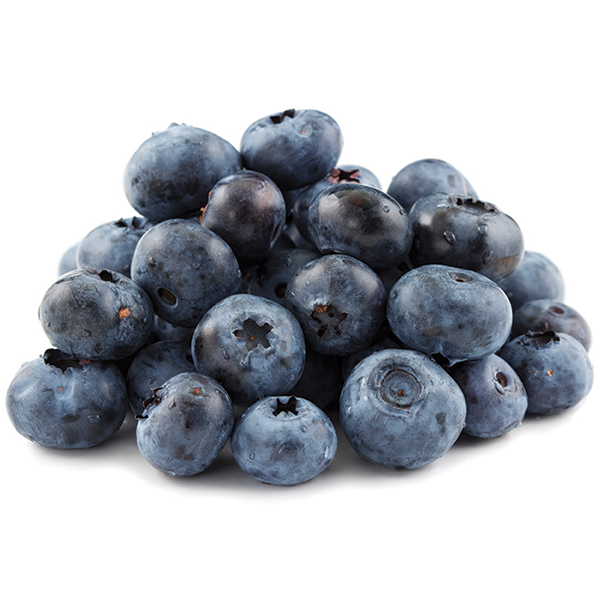
Blueberries’ reputation as a superfood, along with their sweet flavor, have contributed to their rise in popularity. Offer blueberries year-round, but beef up your promotions during spring and summer when prices fall. Tap into their continued popularity to boost your bottom line.
Shipping
12 ½-dry pint cups 12 12-oz. cups 12 8-oz. cups 12 6-oz. cups 12 1-dry pint cups 12 125-gram cups 12 100-gram cups 8 1-quart cups 8 22-oz. cups 6 1-quart cups 6 1-dry pint cups 4 2.5-lb. clamshells Various bulk master packs of 2½, 5, 10 and 20 lbs. are available. RPC 6409, 6411
Grades
United States U.S. No. 1 The grade applies to selected and hybrid varieties of the high-bush blueberry. Size is the general basis for sale. Larger berries bring a higher price. The number required to fill a half-pint measure determines size.
Handling
Color and brightness of fruit will vary depending on varieties. Look for berries that are blue to dark blue in color. Most varieties of fresh blueberries have silver-white frost, which is referred to as “bloom.” Lack of bloom on some varieties may be an indication of excessive handling and lack of freshness. Size doesn’t denote quality or maturity level. If blueberries are exposed to higher than recommended temperatures, shelf life will be reduced significantly and skin will become rough-textured. Temperature: 32 to 34 F, 0 to 1 C Relative humidity: 90-95% Mist: no Typical shelf life: 10 to 18 days Highly sensitive to freezing injuries
1 pint = about 2½cups 1 dry pint = about 33.6 cubic inches 1 dry pint = about 12 oz.